Civil Engineering is not always taught through the books… The fact that a spider builds a web, is also a civil engineering marvel!
Ancient Indians aced it! India knew civil engineering, architecture, city planning, water management, etc. from long ago. They probably, had more knowledge about the strength and properties of different materials than what we know today. They left us a bounty of heritage; the structures that are standing erect for thousands of years. And sadly today, recently constructed bridges and buildings collapse!
For this article, we would stick to ancient Hindu temples and the marvel of engineering and architecture they demonstrate. The construction of Hindu temples can be a research subject as it involves many intricate facts, yet here we shall cover only a few interesting aspects.
1. The temples were constructed using granite blocks and bricks. Ancient Indian temples were built by quarrying and sculpting huge stones, often granite, with huge manpower and animal power for logistics and building. Granite is one of the toughest stones to cut.
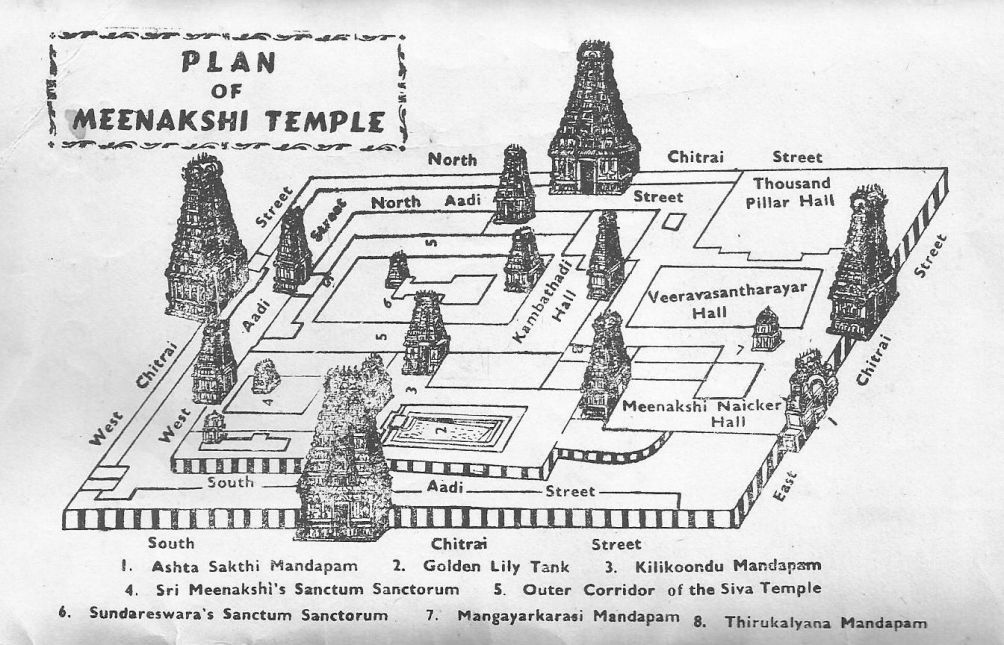
2. The basic plan of a Hindu temple is an expression of sacred geometry where the temple is visualized as a grand mandala. The temple complex of Meenakshi temple too, resembles a mandala pattern when viewed from above. A mandala is a structure conferring the laws of symmetry and loci.
A mandala is a sacred shape consisting of the intersection of a circle and a square. The square shape is symbolic of earth, signifying the four directions while the circle is logically the perfect metaphor for heaven, since it is a perfect shape, without beginning or end, signifying timelessness, and eternity.
3. The Meenakshi temple in Madurai, India, is a gargantuan granite temple, with an awesome architecture. The load bearing columns of the temple (hundreds of them) are massive and each one of them has carvings of deities, nymphs, and other creatures.
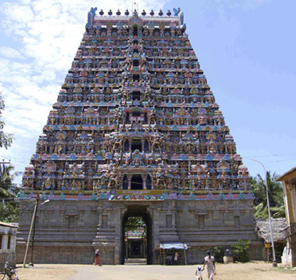
4. The main temple is enclosed in a wall, a pyramidical structure that is 850 feet x 725 feet (almost a square), built over the entryway. The entryway, towered to a height of about 160 feet, was built in the middle of this thick wall.

The marvel is in thickness of the wall structure that were impenetrable. Such place of devotion depicted the strength of faith, honour, and pride, equally felt by those who constructed them and those who worshipped there.
5. The temple has a total of 6825 pillars. There is one ‘thousand-pillared hall’, which has the famous ‘musical’ pillars made of stone. There are five musical pillars each consisting of 22 smaller pillars – carved out of a single block of granite – that produce musical notes when tapped.
6. This hall has a total of 985 pillars. These pillars have been so arranged that from whatever angle one looks, the pillars appear in rows. The pillars appear to be in a straight line.
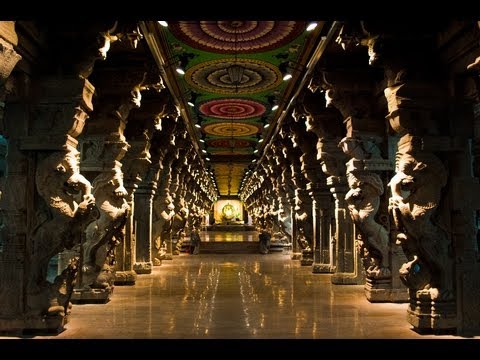
7. Meenakshi temple adheres to the laws of acoustics. Echoes and excessive reverberation are not the example of good acoustics. Flat surfaces create standing waves which produce flutter echoes. Concave surfaces produce focused echoes. Convex surfaces diffuse reflections i.e. they break up and distribute sound.
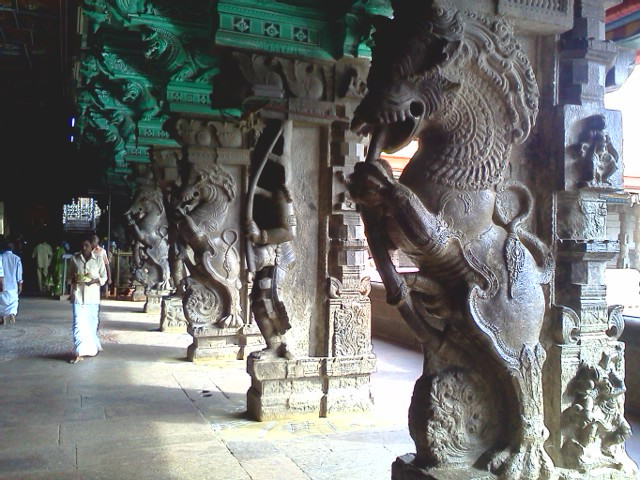
Space noise and all noises of nature are ‘white noise’ which mask other noises and deliver a soothing effect. All the stone pillars have sharp non-filleted edges, which are good sound diffusers. All the statues have convex surfaces that diffuse sound too.
The four kinds of musical instruments – string, percussion, wind, and brass. Each of these has many varieties. All these instruments, with or without combinations, can be played anywhere in the temple, with balanced acoustics.
8. Parallel walls or parallelism produces standing waves, which in turn create echoes. Hence, the statues on the pillars in any hall have random distribution to avoid symmetry and parallelism. All parts of the statues are proportioned to the Golden Ratio 1.618 and the Fibonacci Spiral is liberally used in the statues.
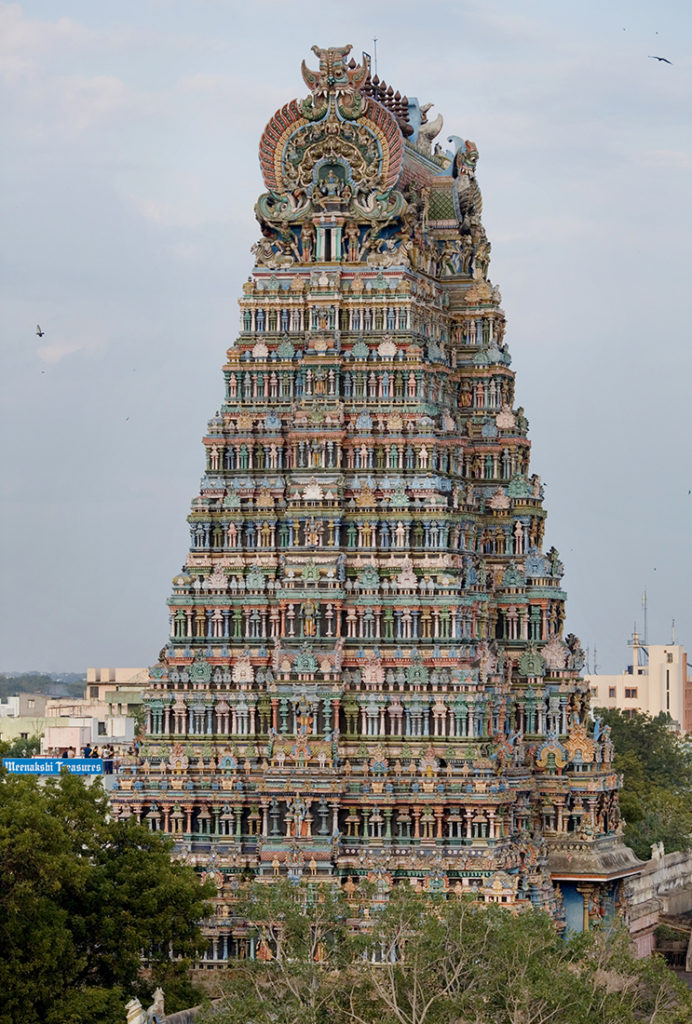
9. Besides sculpting and placing large and tough blocks of the stones to build the temples, the ancient temple engineers also demonstrated breath-taking intricate ‘sculpting and carving’. Meenakshi temple’s tallest entryway is approximately 170 feet and contains more than 1500 figures.
To conclude, one may say that the construction technology of Hindu temples was an art, a science and a complicated creative study with a blend of mathematics, logic, geography, geology, science, ecology, art, sculpting, music, light and sound, religion, social sciences, and astrology.
Monica (Managing Editor) is the quintessential researcher - she thrives on showcasing overlooked aspects that form the foundation blocks of people, places and issues. She is a social scientist by profession with masters in Economics and loves to travel.